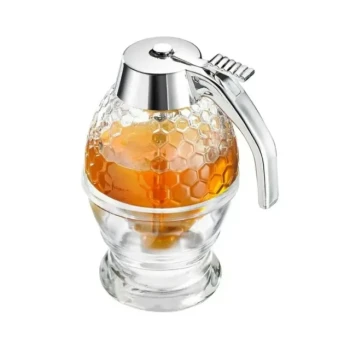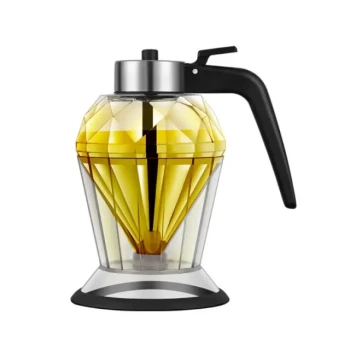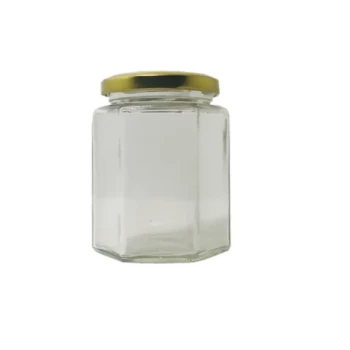Each jar of raw, local honey is a unique snapshot of a specific place and time. Its distinct character is not an accident but a direct result of the specific flowers the bees visited, the unique environmental conditions of a single season, the health of the colony, and the beekeeper's hands-off approach. Unlike a standardized, mass-produced product, it is a living record of a local ecosystem.
The core reason for honey's uniqueness is that it's not manufactured; it's farmed. It is a direct expression of its "terroir"—a combination of soil, climate, and plant life—meaning the exact flavor, color, and texture profile of a single jar can never be perfectly replicated.
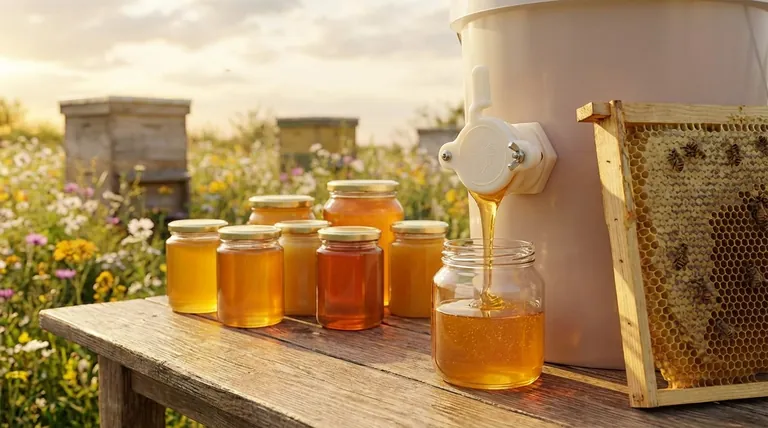
The Dominant Factor: The Floral Source
The single greatest influence on a honey's character is the nectar collected by the bees. This is the foundation of its taste, color, and aroma.
Monofloral vs. Polyfloral
Honey is generally categorized into two types based on its nectar source. Monofloral honey comes predominantly from a single type of flower, such as clover, orange blossom, or buckwheat. Beekeepers achieve this by placing hives in areas with a dominant bloom.
Polyfloral honey, often called "wildflower," is derived from a diverse mix of nectars from whatever flowers were blooming in the area. This creates complex and unpredictable flavor profiles that change from one season to the next.
How Nectar Dictates Flavor and Color
Different nectars have profoundly different chemical compositions, leading to a wide spectrum of honey varieties.
For example, clover honey is typically light in color with a mild, classic sweetness. In contrast, buckwheat honey is very dark, almost black, with a robust, malty, and molasses-like flavor.
The Influence of Pollen
Raw honey contains pollen grains from the plants the bees visited. While not a primary flavor source, this pollen is a unique fingerprint that allows experts to identify the honey's geographical and botanical origin.
The Impact of Season and Climate
The environment plays a critical role in what the bees can produce. A hive in the exact same location will create dramatically different honey from one year to the next.
Rainfall and Sunlight
The amount of rain and sun directly impacts when flowers bloom and how much nectar they produce. A particularly wet spring might favor certain flowers, leading to a honey dominated by those notes.
A dry, hot summer can concentrate the sugars in nectar, resulting in a thicker, richer honey than would be produced in a milder year.
From Spring to Fall
The honey's profile changes drastically within a single year. A spring harvest might be light and floral, derived from fruit tree blossoms and dandelions.
The same hive's fall harvest will be darker and more robust, created from late-season blooms like goldenrod and aster.
The Definition of "Raw": Minimal Processing
The term "raw" is just as important as "local" in defining a honey's unique character. It refers to how the honey is handled after being extracted from the hive.
Unheated and Unfiltered
Raw honey is not pasteurized (heated). Heating honey to high temperatures destroys delicate enzymes and volatile aromatic compounds, effectively stripping it of its nuanced flavors.
It is also typically only strained to remove large debris like wax, rather than being finely filtered. This leaves the beneficial pollen and propolis particles intact, which contribute to the honey's texture and profile.
The Crystallization Variable
Crystallization is a natural process in raw honey and a sign of its quality. The speed and texture of the crystals depend on the nectar's glucose-to-fructose ratio. Alfalfa honey crystallizes quickly into fine crystals, while tupelo honey, high in fructose, may not crystallize for years.
The Contrast with Commercial Honey
Most supermarket honey is a blend from multiple countries, heated, and ultra-filtered. This process is designed to create a perfectly uniform, clear, and shelf-stable product that tastes the same every time. The trade-off is the complete loss of the unique character and terroir that makes local honey special.
What This Means for You
Understanding these factors allows you to choose honey that aligns with your specific goals.
- If your primary focus is a consistent flavor profile: Look for monofloral honeys and learn the tasting notes of different nectar sources like orange blossom or lavender.
- If your primary focus is complex, one-of-a-kind tastes: Embrace polyfloral "wildflower" honey from a local beekeeper, knowing each harvest will be a unique surprise.
- If your primary focus is a connection to your local environment: Always choose honey from a beekeeper in your area, as it is a true taste of your regional ecosystem.
Ultimately, choosing raw, local honey is about embracing a natural product that tells the authentic story of its origin.
Summary Table:
| Factor | How It Creates Uniqueness | Example |
|---|---|---|
| Floral Source | Determines primary flavor, color, and aroma. | Clover (light & mild) vs. Buckwheat (dark & robust). |
| Season & Climate | Weather patterns affect nectar quality and quantity each year. | A wet spring vs. a dry summer creates different honey. |
| Processing (Raw) | Unheated and unfiltered to preserve natural enzymes, pollen, and flavor. | Contrasts with heated, blended commercial honey. |
Source the finest, most unique honey for your customers.
At HONESTBEE, we supply commercial apiaries and beekeeping equipment distributors with the high-quality supplies needed to produce exceptional raw honey. From durable hive components to efficient extraction tools, our wholesale-focused operations help you support the art of beekeeping and deliver authentic local honey.
Contact our wholesale team today to discuss your supply needs.
Visual Guide
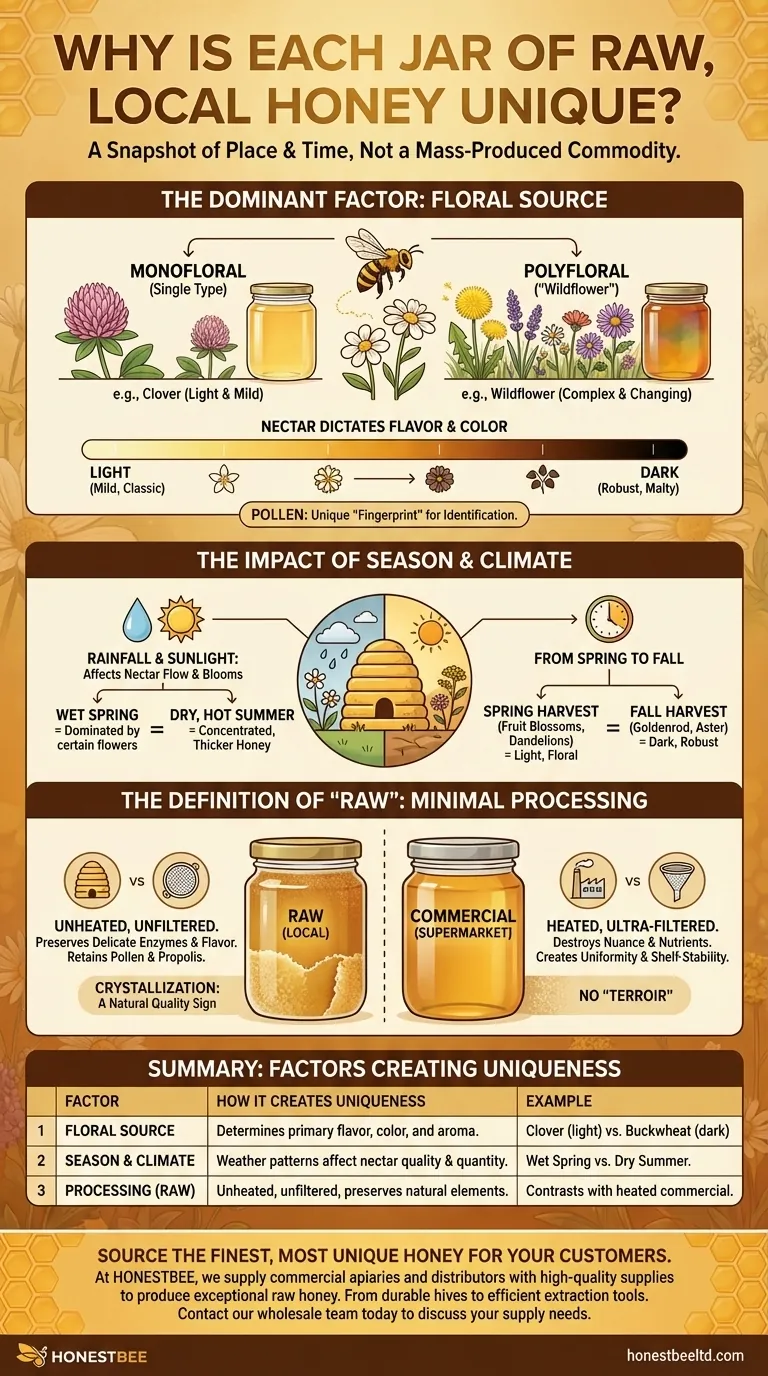
Related Products
- Plastic Honey Gate Spout with Wing Nut for Beekeeping Honey Bucket
- Honeycomb Style Drip Free Honey Dispenser
- Stainless Steel Honey Press Wax Press with Tank
- 10L Stainless Steel Electric Honey Press Machine
- HONESTBEE 3-Frame Manual Acrylic Honey Extractor
People Also Ask
- How can honey residues be removed? Use Warm Water and Soap for Easy, Chemical-Free Cleaning
- What is the best way to pack honey? Preserve Quality and Manage Crystallization
- How long does honey flow last? Master the 2-Week Window for Maximum Harvest
- What are the steps for cleaning and maintaining a honey gate? Ensure Honey Purity and Prevent Costly Leaks
- How does higher moisture levels affect microbial growth in honey? It's the primary cause of fermentation and spoilage.

